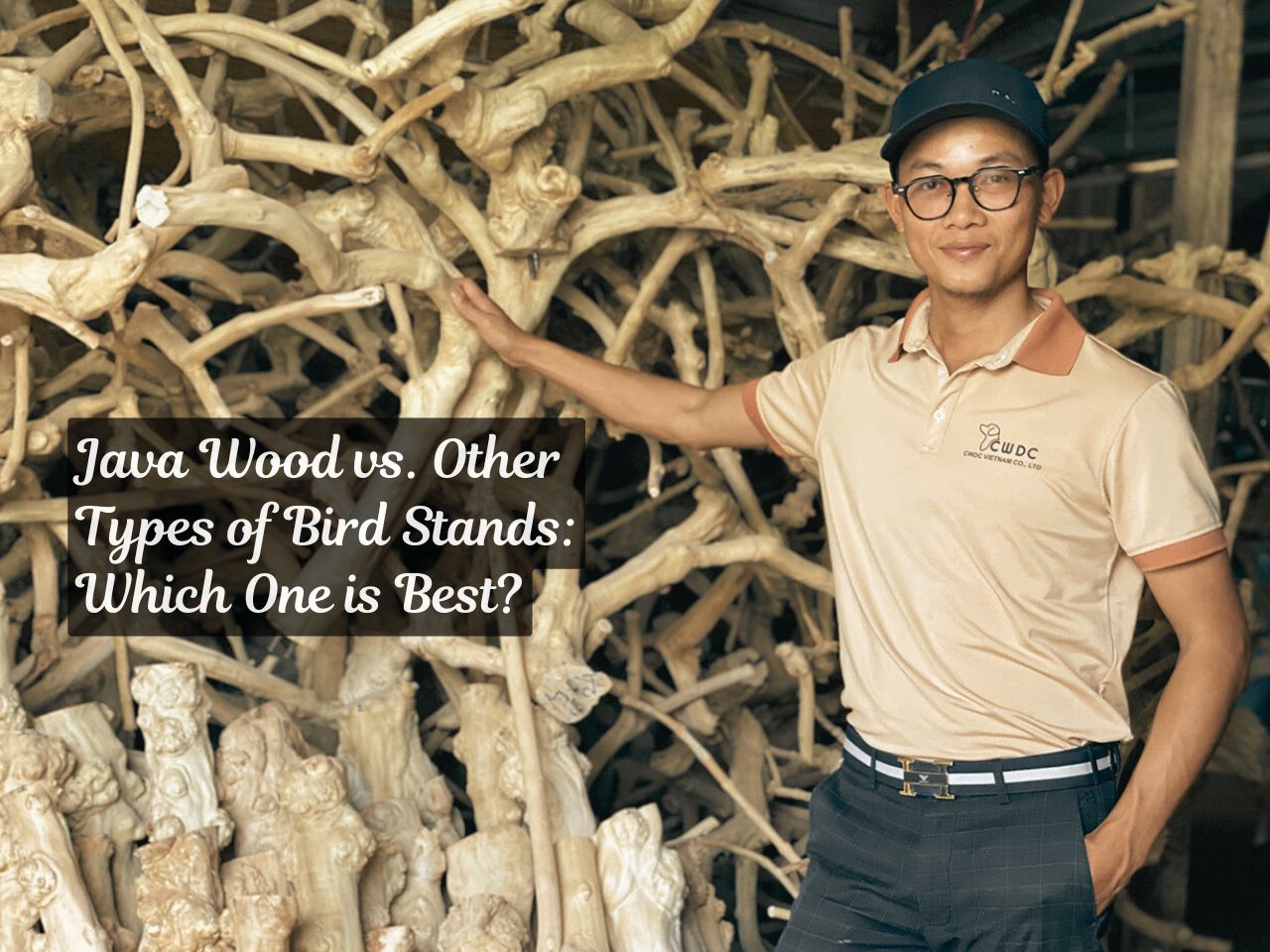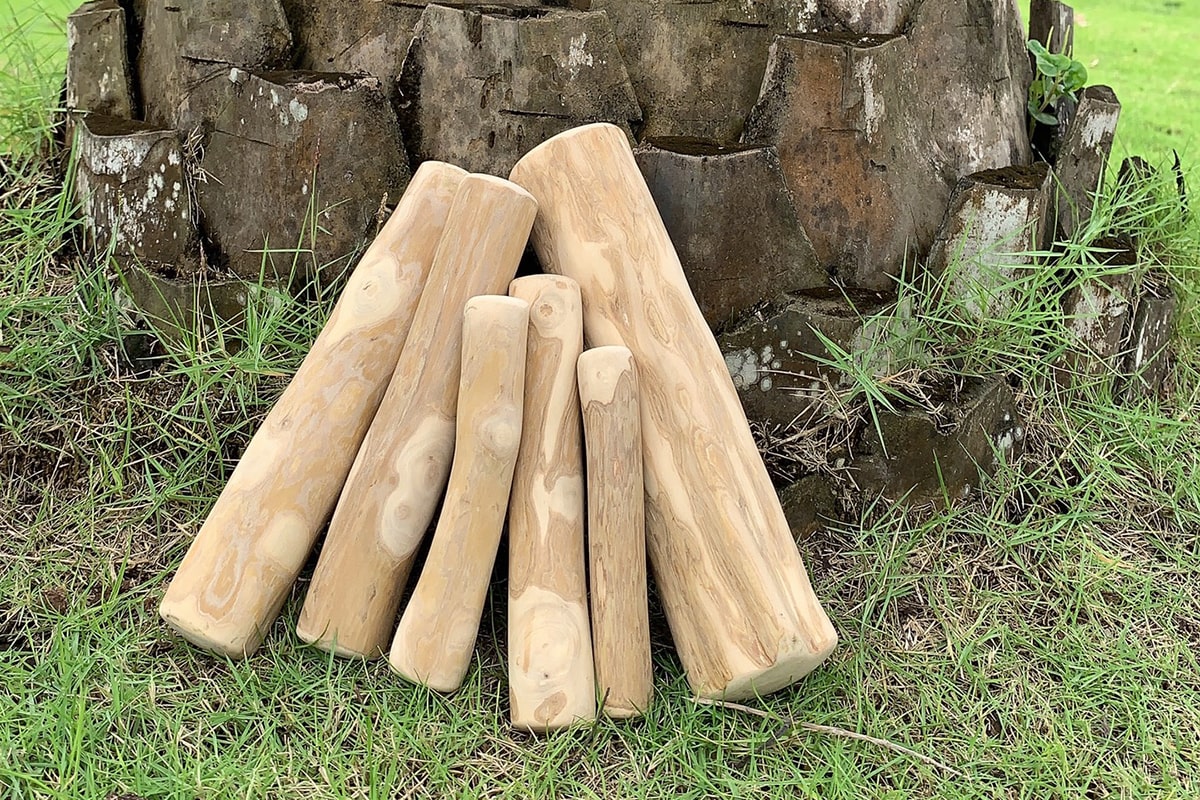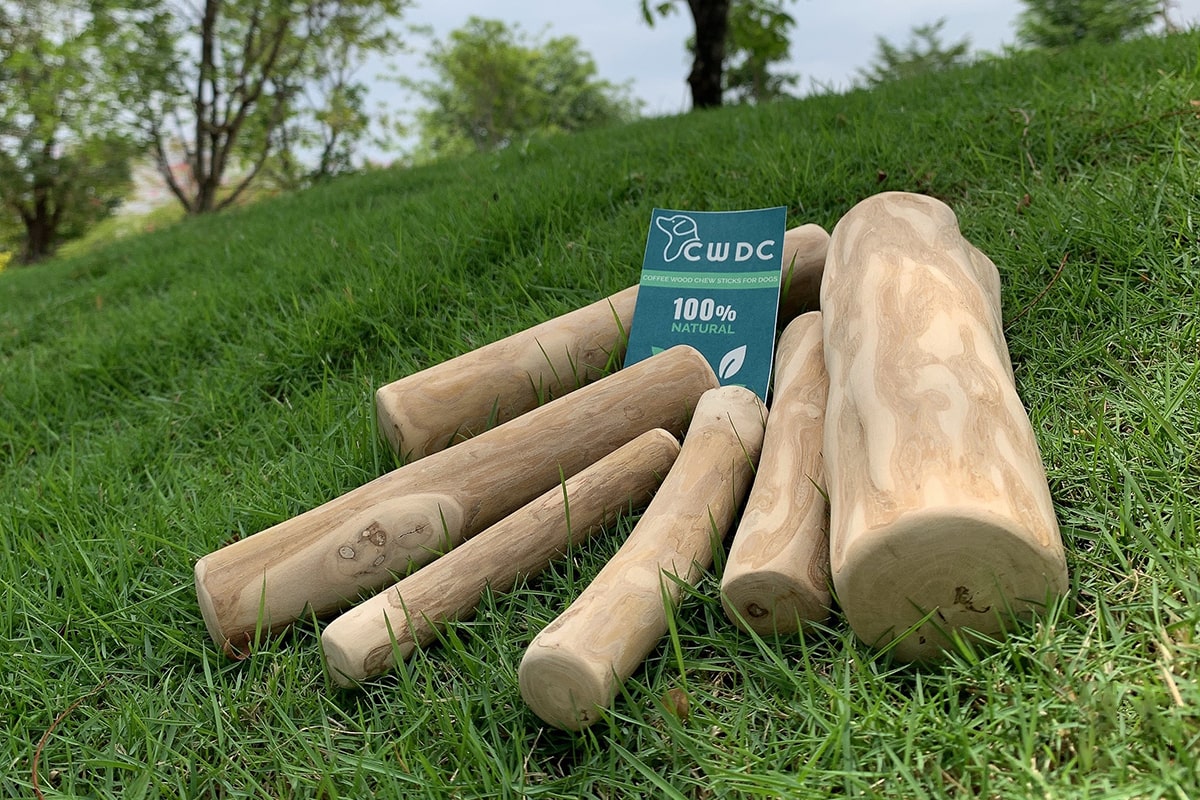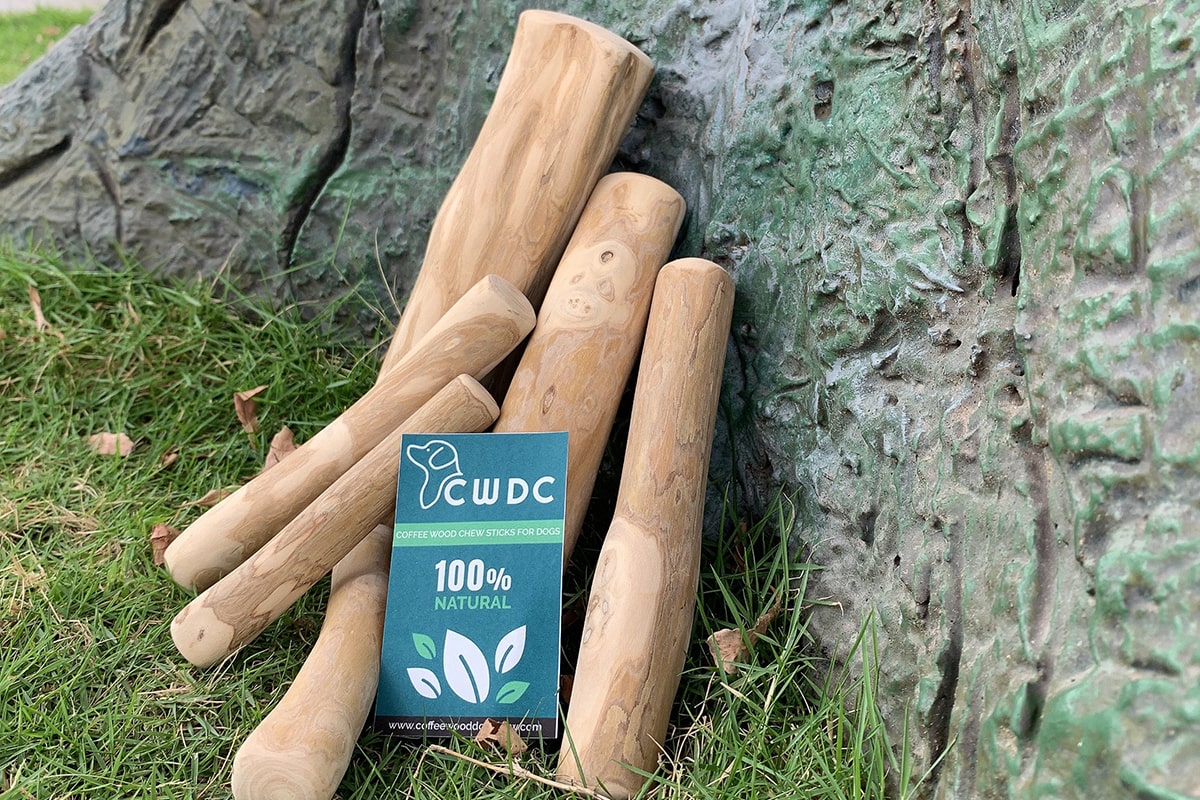Choosing the right bird stand is crucial for your bird’s comfort, health, and overall well-being. Bird stands provide a dedicated space for perching, playing, training, and socializing outside the cage. However, not all bird stands are the same—materials vary, and each has its own advantages and drawbacks.
Among the most popular options, Java wood stands are known for their durability, natural feel, and aesthetic appeal, but how do they compare to other types like manzanita, PVC, metal, acrylic, or rope-based stands?
In this article, we’ll compare Java wood vs. other common bird stand materials to help you decide which is the best choice for your feathered companion.
1. Java Wood Bird Stands: Features & Benefits
Java wood, also known as coffee wood, comes from coffee trees that no longer produce coffee beans. The wood is incredibly dense, durable, and resistant to damage. Java wood bird stands are usually handcrafted from natural branches, offering a unique and organic shape that mimics the perches birds would use in the wild.
✔ Pros of Java Wood Stands
✅ Extremely durable – Can withstand strong beaks and heavy chewers (great for parrots and large birds).
✅ Naturally textured surface – Helps strengthen a bird’s feet and prevents slipping.
✅ Unique and natural look – No two Java wood stands are alike, adding an aesthetic appeal to your home.
✅ Non-toxic and safe – Free from harmful chemicals or artificial coatings.
✅ Provides mental stimulation – The natural curves and branches encourage climbing and exploration.
✅ Stable and sturdy – High-quality Java wood stands often have a strong, stable base to prevent tipping.
❌ Cons of Java Wood Stands
❌ Can be expensive – High-quality Java wood stands tend to be pricier than other materials.
❌ Heavy weight – Because Java wood is dense, larger stands can be difficult to move.
❌ Limited flexibility – Once a Java wood stand is built, it cannot be reshaped or modified easily.
2. Manzanita Wood Bird Stands
Manzanita wood is another popular choice for bird perches and stands. It is a hardwood that is naturally smooth and resistant to chewing, making it an excellent alternative to Java wood.
✔ Pros of Manzanita Wood Stands
✅ Extremely hard and long-lasting – Ideal for birds that chew aggressively.
✅ Attractive reddish-brown appearance – Aesthetic appeal similar to Java wood.
✅ Available in natural and sandblasted forms – Natural manzanita is smooth, while sandblasted manzanita provides a better grip.
✅ More affordable than Java wood – Generally costs less, while still being durable.
❌ Cons of Manzanita Wood Stands
❌ Very slippery – The natural smoothness of manzanita can make it harder for birds to grip, leading to foot fatigue.
❌ Brittle under pressure – While hard, manzanita wood can crack or split if dropped.
❌ Limited size options – Not as widely available in large play stand formats like Java wood.
3. PVC Bird Stands
PVC (polyvinyl chloride) bird stands are commonly used for their lightweight and washable properties. They are often chosen for birds that need an easy-to-clean play area.
✔ Pros of PVC Stands
✅ Very easy to clean – Smooth, non-porous surface prevents bacterial buildup.
✅ Lightweight and portable – Easy to move around the house.
✅ Affordable – Cheaper than Java or Manzanita wood stands.
✅ Customizable – Can be built into different shapes and sizes with PVC pipes.
❌ Cons of PVC Stands
❌ Lacks natural texture – Birds may struggle to grip the smooth surface.
❌ Less durable for heavy chewers – Can be easily destroyed by large parrots.
❌ Not as visually appealing – Looks artificial compared to natural wood.
❌ Less engaging – Doesn’t offer the natural climbing experience that wood provides.
4. Metal Bird Stands (Stainless Steel or Powder-Coated Iron)
Metal bird stands are commonly used for large birds that need a strong and chew-proof play stand. Many commercial parrot play gyms are made of stainless steel or powder-coated metal.
✔ Pros of Metal Stands
✅ Extremely durable – Ideal for large birds like macaws, cockatoos, and African Greys.
✅ Easy to clean – Can be wiped down or disinfected easily.
✅ Does not absorb moisture – Prevents bacterial growth.
✅ Stable and tip-resistant – Heavy base prevents tipping over.
❌ Cons of Metal Stands
❌ Can be cold and uncomfortable – Birds may not enjoy perching on metal, especially in colder climates.
❌ Heavy and difficult to move – Large stainless steel stands can be bulky.
❌ More expensive – High-quality metal stands are often pricey.
❌ May lack natural engagement – Birds prefer textured surfaces like wood for climbing and gripping.
5. Rope Bird Stands
Rope bird stands (such as cotton or sisal perches) are often used to create flexible, swinging play areas. They can be used in combination with wood or PVC stands for variety.
✔ Pros of Rope Stands
✅ Comfortable for bird’s feet – Soft texture is gentle on feet, reducing pressure points.
✅ Flexible and fun – Allows birds to swing and balance, improving coordination.
✅ Great for small birds – Budgies, finches, and cockatiels enjoy soft rope perches.
❌ Cons of Rope Stands
❌ Not as durable – Can fray or wear out over time.
❌ Can be unsafe if frayed – Loose strands can entangle a bird’s feet or be accidentally swallowed.
❌ Absorbs moisture – Can harbor bacteria if not cleaned regularly.
6. Which Bird Stand is Best for Your Bird?
The best stand depends on your bird’s species, size, activity level, and chewing habits:
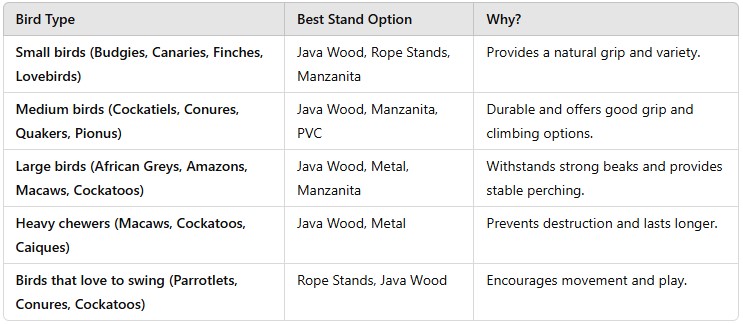
Conclusion: Java Wood vs. Other Bird Stands – Which One Wins?
While each type of bird stand has its own benefits, Java wood stands offer the best combination of durability, safety, natural texture, and aesthetic appeal. However, the right choice depends on your bird’s species and habits.
If you’re looking for a strong, long-lasting, and engaging stand, Java wood is one of the best investments you can make for your feathered friend!
Related Posts:
- Can Java Wood Bird Stands Help with Bird Behavior and Training?
- Java Wood Bird Stands: Aesthetic and Functional Benefits for Your Home
- Java Wood Play Stands: Creating a Fun and Engaging Environment for Your Bird
- Why Do Dogs Chew on Furniture, Shoes, and Other Household Items?
- How to Choose the Right Java Wood Bird Stand for Your Feathered Friend
- Are coffee wood chews safe for dogs ? A Comprehensive Look




